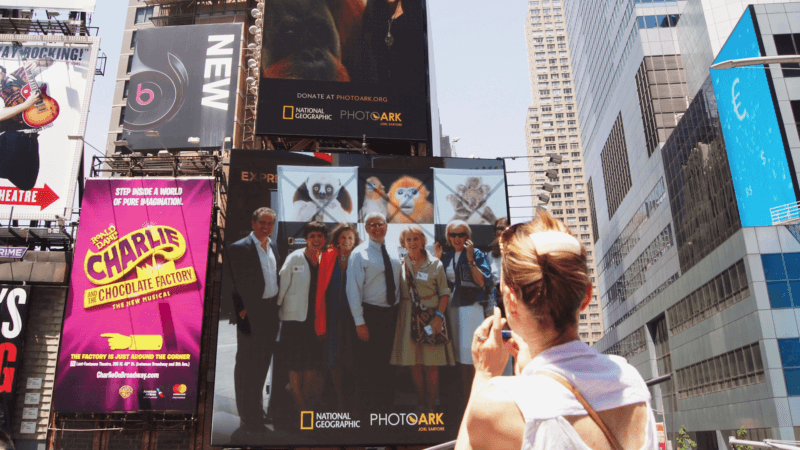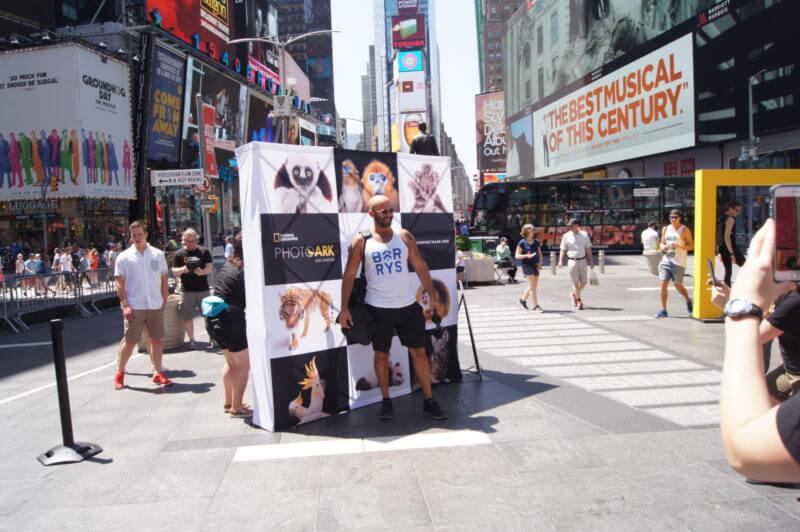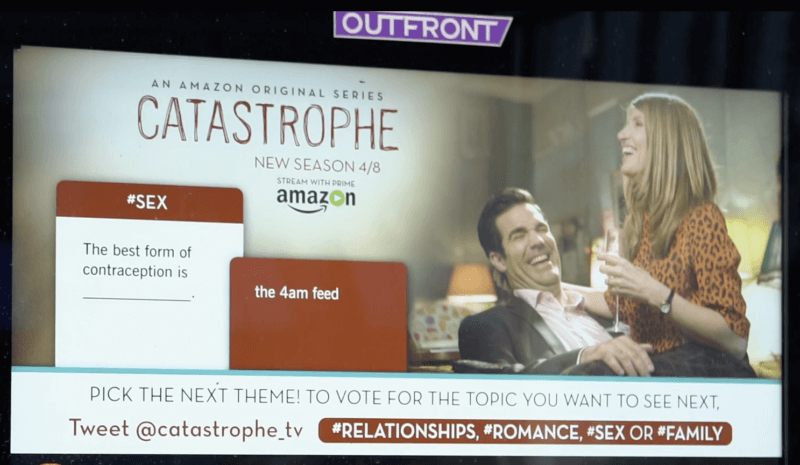Projects from National Geographic and others use outdoor displays as giant kiosks, social media outlets, weather-responding screens and more.

It’s not just that billboards — those static and fading printed signs along highways — have evolved into digital displays within an increasingly programmatic ad ecosystem.
It’s that they — and their digital display cousins in city squares, bus stops, airports and elsewhere — have turned into an interactive platform.
A new project from National Geographic and Outdoor Advertising Association of America (OAAA) is the latest sign.
On Endangered Species Day (May 19), several digital billboards in New York City’s Times Square participated in a one-hour event where members of the public could take a selfie with an image of an endangered animal (displayed as photos at street level) and then post it to the hashtag #SaveTogether on Twitter and Instagram. Using a moderation system, the event organizers then selected 175 selfies for projection on the participating billboards (see image above).

The animal images were supplied by Nat Geo’s Photo Ark project, which seeks to document all the species in the world’s zoos and sanctuaries in order to encourage conversation. Twenty-five of the 6,500 species photographed so far are used in this project, including the Florida panther, the Golden Snub-nosed monkey and the Malayan tiger.
This Nat Geo campaign — which its organizers describe as a “ground-breaking” interactive billboard project because of its scale — is now continuing at locations throughout the US, including Boston, Chicago, Cincinnati, Los Angeles, Minneapolis and Philadelphia. In all, over 45,000 DOOH screens in digital billboards, bus shelters, airport dioramas and mall kiosks are participating in the effort.
It is administered through OpenLoop, a real-time campaign management and distribution platform donated by ad tech firm QDOT. QDOT, which was spun off in April from digital Out-of-Home (DOOH) production house Grand Visual, offers ad serving, optimization and tracking tools for this market.
But selfies represent only one way that outdoor digital displays are becoming more interactive.
A number of outdoor displays, for instance, offer Near Field Communication (NFC) sensors or QR codes. A study last year by Nielsen found that nearly a quarter of people with smartphones who viewed out-of-home displays have interacted with them via NFC or QR, calling up additional material on their devices.
Wit, traffic and weather
A recent New York City campaign for Amazon Prime’s TV series “Catastrophe,” produced by Grand Visual, showed “fill-in-the-blank” statements in several categories that were supposed to reflect the brutal and often comic honesty of the series’ main characters, Rob and Sharon. For instance, such a statement in the #Sex category might read, “The best form of contraception is _____.” Elsewhere in the display was the answer: “The 4am feed.”

Passersby could then tweet to the “Catastrophe” account about the themes they’d like to see for such “fill-in-the-blank” statements — either more #Sex, or #Relationships, #Romance or #Family. The participant would also see the vote results.
Last year, a campaign for Dannon Yogurt featured billboards whose imagery was related to one of four different speeds of passing traffic.
San Mateo, California-based Pecabu displays the ads on its outdoor electronic displays according to a real-time assessment of area demographics, weather and similar local data. Some of its displays include a camera that anonymously counts passersby or cars, and there is also an app for smartphones that shares geolocation for tracking in exchange for rewards.
And Outfront Media has been using digital displays in a variety of interactive ways, including as large outdoor kiosks:
This trend toward interactivity in outdoor digital displays has obviously just begun. New sensors in cars, clothing and other real-world items can be tapped for input, more sophisticated motion detectors will add a greater visual dynamism, and we’re not that far from Minority Report’s personalized imagery that is tailored to each passing individual:
It’s certainly ironic that billboards and similar signage, once considered static barriers blocking the world behind them, are now becoming more responsive to their surroundings than trees ever were.
Marketing Land – Internet Marketing News, Strategies & Tips
(39)
